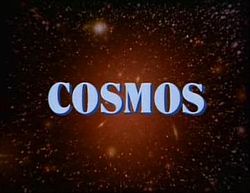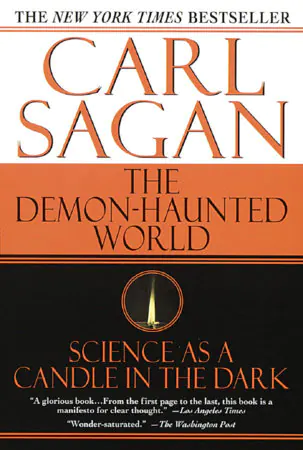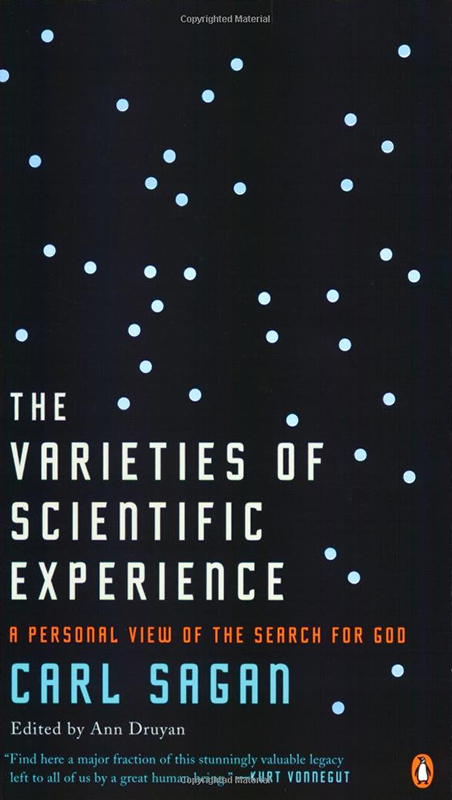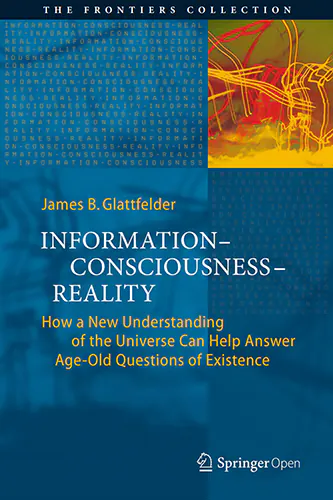The Library of Consciousness
of Consciousness

Ann Druyan is an American writer and producer specializing in the communication of science. She co-wrote the 1980 PBS documentary series Cosmos, hosted by Carl Sagan, whom she married in 1981. She was also the Creative Director of NASA’s Voyager Interstellar Message Project, the golden discs affixed to both the Voyager 1 and Voyager 2 spacecraft.
Alphabetic
Date
Duration
Word Count
Popularity

Date
September 28, 1980
Format
Television Episode
Word Count
5,603
Duration
01:00:24
Quotes
10
Views
7,494
Carl Sagan opens the program with a description of the cosmos and a “spaceship of the imagination” shaped like a dandelion seed. The ship journeys through the universe’s hundred billion galaxies, the Local Group, the Andromeda galaxy, the Milky Way, the Orion Nebula, our solar system, and finally the planet Earth. Eratosthenes’ successful calculation of the circumference of Earth leads to a description of the ancient Library of Alexandria. Finally, the “Ages of Science” are described, before pulling back to the full span of the cosmic calendar.

Date
October 5, 1980
Format
Television Episode
Word Count
6,181
Duration
57:19
Quotes
6
Views
3,207
Sagan discusses the story of the Heike crab and artificial selection of crabs resembling samurai warriors, as an opening into a larger discussion of evolution through natural selection (and the pitfalls of intelligent design). Among the topics are the development of life on the Cosmic Calendar and the Cambrian explosion; the function of DNA in growth; genetic replication, repairs, and mutation; the common biochemistry of terrestrial organisms; the creation of the molecules of life in the Miller-Urey experiment; and speculation on alien life (such as life in Jupiter’s clouds). In the Cosmos Update ten years later, Sagan remarks on RNA also controlling chemical reactions and reproducing itself and the different roles of comets (potentially carrying organic molecules or causing the Cretaceous–Paleogene extinction event).

Date
October 12, 1980
Format
Television Episode
Word Count
6,024
Duration
56:36
Views
2,793
Beginning with the separation of the fuzzy thinking and pious fraud of astrology from the careful observations of astronomy, Sagan follows the development of astronomical observation. Beginning with constellations and ceremonial calendars (such as those of the Anasazi), the story moves to the debate between Earth and Sun-centered models: Ptolemy and the geocentric worldview, Copernicus’ theory, the data-gathering of Tycho Brahe, and the achievements of Johannes Kepler (Kepler’s laws of planetary motion and the first science-fiction novel).

Date
October 19, 1980
Format
Television Episode
Word Count
6,893
Duration
01:01:03
Quotes
3
Views
1,194
Sagan discusses comets and asteroids as planetary impactors, giving recent examples of the Tunguska event and a lunar impact described by Canterbury monks in 1178. It moves to a description of the environment of Venus, from the previous fantastic theories of people such as Immanuel Velikovsky to the information gained by the Venera landers and its implications for Earth’s greenhouse effect. The Cosmos Update highlights the connection to global warming.

Date
October 26, 1980
Format
Television Episode
Duration
01:01:14
Views
1,109
The episode, devoted to the planet Mars, begins with scientific and fictional speculation about the Red Planet during the late nineteenth and early twentieth centuries (H. G. Wells’ The War of the Worlds, Edgar Rice Burroughs’ science fiction books, and Percival Lowell’s false vision of canals on Mars). It then moves to Robert Goddard’s early experiments in rocket-building, inspired by reading science fiction, and the work by Mars probes, including the Viking, searching for life on Mars. The episode ends with the possibility of the terraforming and colonization of Mars and a Cosmos Update on the relevance of Mars’ environment to Earth’s and the possibility of a manned mission to Mars.

Date
November 2, 1980
Format
Television Episode
Duration
01:01:08
Views
1,021
The journeys of the Voyager probes is put in the context of the Netherlands in the seventeenth century, with a centuries-long tradition of sailing ship explorers, and its contemporary thinkers (such as Constantijn Huygens and his son Christiaan). Their discoveries are compared to the Voyager probes’ discoveries among the Jovian and Saturn systems. In Cosmos Update, image processing reconstructs Voyager’s worlds and Voyager’s last portrait of the Solar System as it leaves is shown.

Date
November 9, 1980
Format
Television Episode
Word Count
6,518
Duration
55:42
Quotes
3
Views
1,942
Carl Sagan teaches students in a classroom in his childhood home in Brooklyn, New York, which leads into a history of the different mythologies about stars and the gradual revelation of their true nature. In ancient Greece, some philosophers (Aristarchus of Samos, Thales of Miletus, Anaximander, Theodorus of Samos, Empedocles, Democritus) freely pursue scientific knowledge, while others (Plato, Aristotle, and the Pythagoreans) advocate slavery and epistemic secrecy.

Date
November 16, 1980
Format
Television Episode
Word Count
6,990
Duration
01:01:37
Quotes
2
Views
1,401
Ideas about time and space are explored in the changes that constellations undergo over time, the redshift and blue shift measured in interstellar objects, time dilation in Albert Einstein’s theory of relativity, the designs of both Leonardo da Vinci and spacecraft that could travel near light speed, time travel and its hypothetical effects on human history, the origins of the Solar System, the history of life, and the immensity of space. In Cosmos Update, the idea of faster-than-light travel by wormholes (researched by Kip Thorne and shown in Sagan’s novel Contact) is discussed.

Date
November 23, 1980
Format
Television Episode
Word Count
5,815
Duration
59:37
Quotes
3
Views
2,904
The simple act of making an apple pie is extrapolated into the atoms and subatomic particles (electrons, protons, and neutrons) necessary. Many of the ingredients necessary are formed of chemical elements formed in the life and deaths of stars (such as our own Sun), resulting in massive red giants and supernovae or collapsing into white dwarfs, neutron stars, pulsars, and even black holes. These produce all sorts of phenomena, such as radioactivity, cosmic rays, and even the curving of spacetime by gravity. Cosmos Update mentions the supernova SN 1987A and neutrino astronomy.

Date
November 30, 1980
Format
Television Episode
Word Count
6,616
Duration
01:03:06
Quotes
1
Views
2,849
Beginning with the origins of the universe in the Big Bang, Sagan describes the formation of different types of galaxies and anomalies such as galactic collisions and quasars. The episode moves further into ideas about the structure of the Universe, such as different dimensions (in the imaginary Flatland and four-dimensional hypercubes), an infinite vs. a finite universe, and the idea of an oscillating Universe (similar to that in Hindu cosmology). The search into other ideas such as dark matter and the multiverse is shown, using tools such as the Very Large Array in New Mexico. Cosmos Update shows new information about the odd, irregular surfaces of galaxies and the Milky Way perhaps being a barred spiral galaxy.

Date
December 7, 1980
Format
Television Episode
Word Count
5,934
Duration
58:35
Quotes
10
Views
1,988
The idea of intelligence is explored in the concepts of computers (using bits as their basic units of information), whales (in their songs and their disruptions by human activities), DNA, the human brain (the evolution of the brain stem, frontal lobes, neurons, cerebral hemispheres, and corpus callosum under the Triune Brain Model), and man-made structures for collective intelligence (cities, libraries, books, computers, and satellites). The episode ends with speculation on alien intelligence and the information conveyed on the Voyager Golden Record.

Date
December 14, 1980
Format
Television Episode
Word Count
5,813
Duration
57:55
Views
887
Questions are raised about the search for intelligent life beyond the Earth, with UFOs and other close encounters refuted in favor of communications through SETI and radio telescope such as the Arecibo Observatory. The probability of technically advanced civilizations existing elsewhere in the Milky Way is interpreted using the Drake equation and a future hypothetical Encyclopedia Galactica is discussed as a repository of information about other worlds in the galaxy. The Cosmos Update notes that there have been fewer sightings of UFOs and more stories of abductions, while mentioning the META scanning the skies for signals.

Date
December 21, 1980
Format
Television Episode
Word Count
5,458
Duration
01:02:11
Quotes
9
Views
2,654
Sagan reflects on the future of humanity and the question of "who speaks for Earth?" when meeting extraterrestrials. He discusses the very different meetings of the Tlingit people and explorer Jean-Francois de La Perouse with the destruction of the Aztecs by Spanish conquistadors, the looming threat of nuclear warfare, and the threats shown by destruction of the Library of Alexandria and the murder of Hypatia. The episode ends with an overview of the beginning of the universe, the evolution of life, and the accomplishments of humanity and makes a plea to mankind to cherish life and continue its journey in the cosmos. The Cosmos Update notes the preliminary reconnaissance of planets with spacecraft, the fall of the Berlin Wall and the end of apartheid in South Africa, and measures towards the reduction of nuclear weapons.

Date
1995
Format
Book
Quotes
23
Views
40
How can we make intelligent decisions about our increasingly technology-driven lives if we don’t understand the difference between the myths of pseudoscience, New Age thinking, and fundamentalist zealotry and the testable hypotheses of science? Casting a wide net through history and culture, Pulitzer Prize–winning author and distinguished astronomer Carl Sagan argues that scientific thinking is critical not only to the pursuit of truth but to the very well-being of our democratic institutions. He examines and authoritatively debunks such celebrated fallacies as witchcraft, faith healings, demons, and UFOs. And yet, disturbingly, in today’s so-called information age, pseudoscience is burgeoning, with stories of alien abduction, “channeling” past lives, and communal hallucinations commanding growing attention and respect. As Sagan demonstrates with lucid eloquence, the siren song of unreason is not just a cultural wrong turn but a dangerous plunge into darkness that threatens our most basic freedoms.

Date
2006
Format
Book
Word Count
53,565
Reading time
≈ 5 hours
Quotes
4
Views
1,044
Carl Sagan’s prescient exploration of the relationship between religion and science, and his personal search for God.

James Glattfelder
Information — Consciousness — Reality
This open access book chronicles the rise of a new scientific paradigm offering novel insights into the age-old enigmas of existence. Over 300 years ago, the human mind discovered the machine code of reality: mathematics. By utilizing abstract thought systems, humans began to decode the workings of the cosmos. From this understanding, the current scientific paradigm emerged, ultimately discovering the gift of technology. Today, however, our island of knowledge is surrounded by ever longer shores of ignorance. Science appears to have hit a dead end when confronted with the nature of reality and consciousness. In this fascinating and accessible volume, James Glattfelder explores a radical paradigm shift uncovering the ontology of reality. It is found to be information-theoretic and participatory, yielding a computational and programmable universe.
David Yaden
The Overview Effect
Viewing the Earth from space has often prompted astronauts to report overwhelming emotion and feelings of identification with humankind and the planet as a whole. In this article, we explore this experience, known as the “overview effect.” We examine astronaut accounts of the overview effect and suggest existing psychological constructs, such as awe and self-transcendent experience, that might contribute to a psychological understanding of this experience. We argue that the overview effect suggests directions for future research on altered states of consciousness in new contexts, with potential implications for better understanding well-being in isolated, confined, extreme (ICE) environments such as space flight.